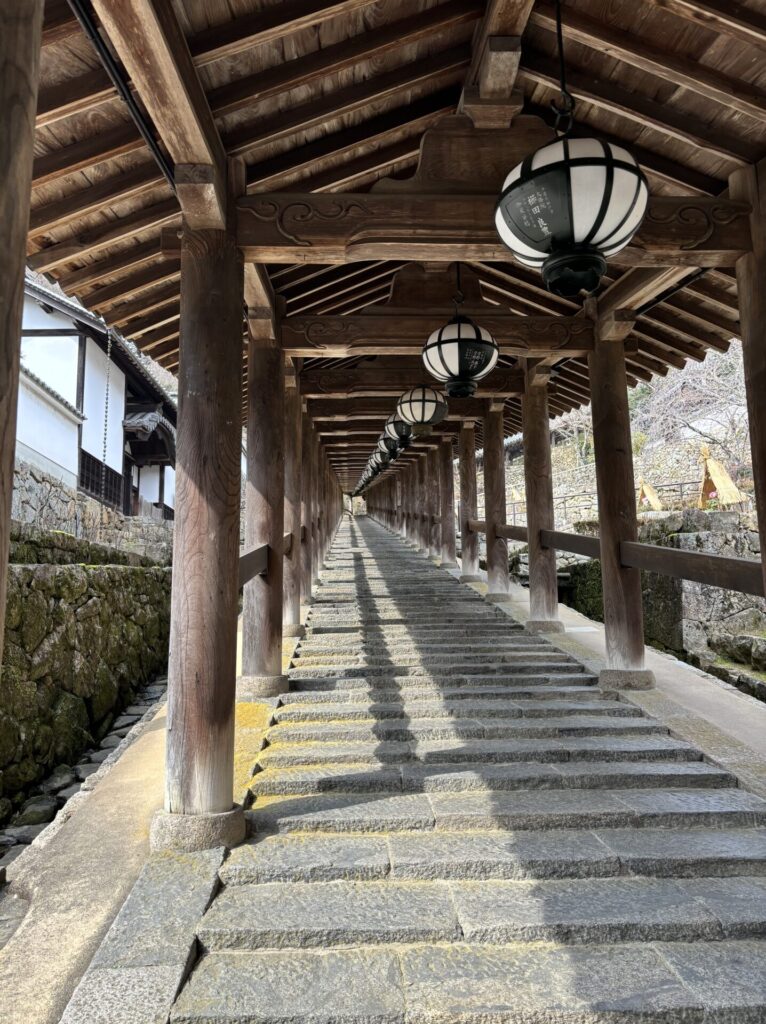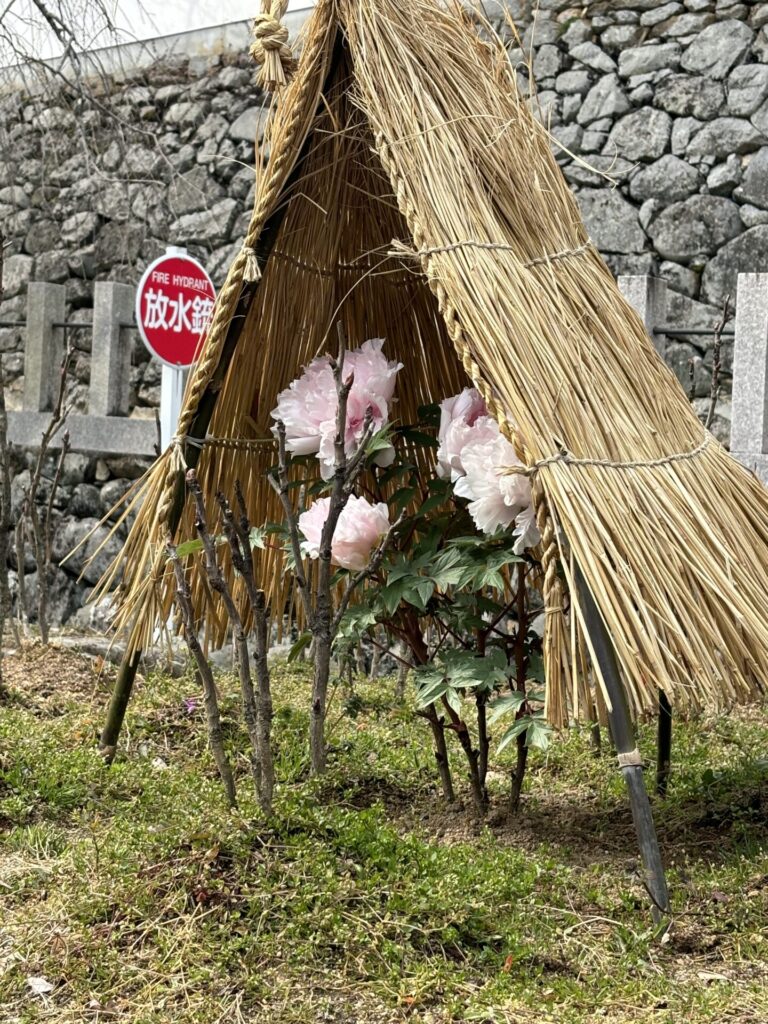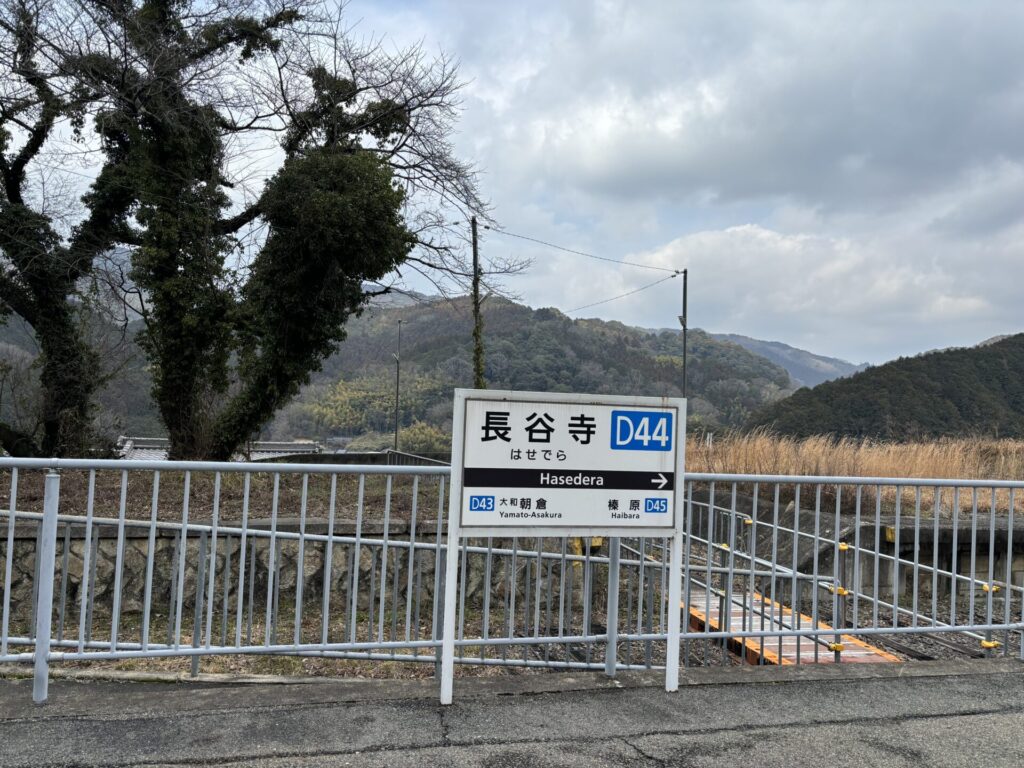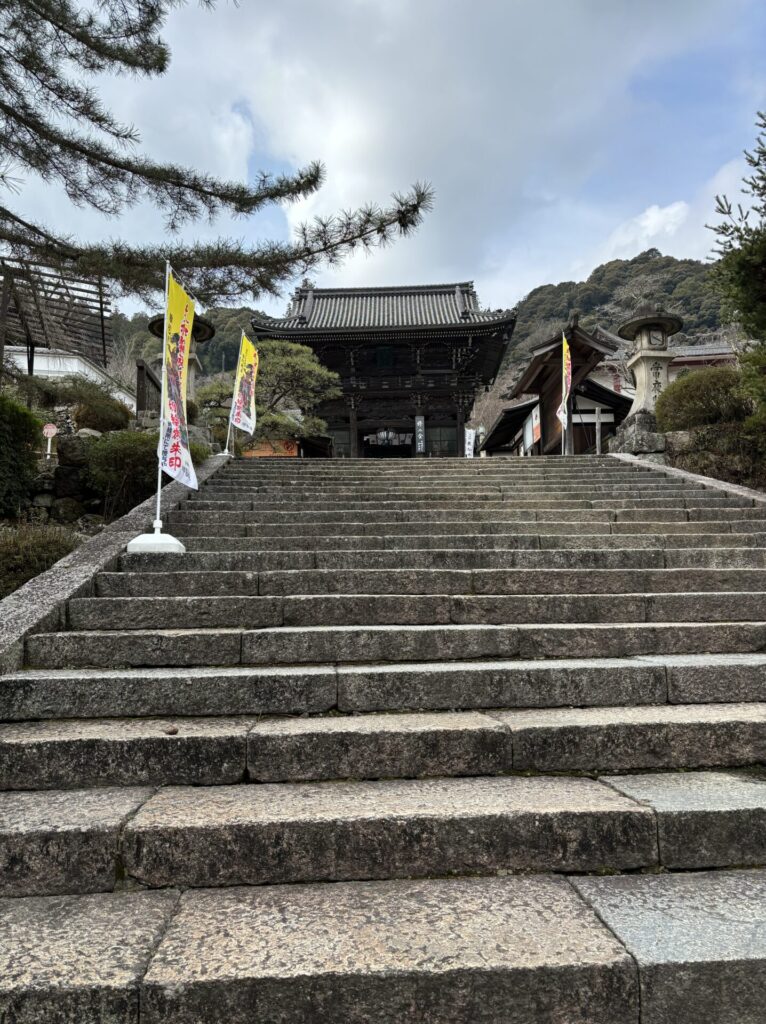
紫式部の『源氏物語』や清少納言の『枕草子』にも登場する寺。願いを叶えてくれる寺として有名です。
A temple that often appears in classics .For example, Murasaki Shikibu’s “The Tale of Genji” and Sei Shonagon’s “Makura no Soshi”. It is famous as a temple that makes wishes come true.
長い登廊が特徴的です。 The long corridor.


「花の御寺」と言われ、花が大切に育てられています。牡丹には、寒さを防ぐために、囲いがしてあります。
It is said to be “the temple of flowers” and flowers are carefully grown. The peonies are enclosed to prevent the cold.


清水寺に少し似ています。
It’s a little similar to Kiyomizu-dera Temple.
長谷寺は、わらしべ長者の舞台です。ある貧乏な男が長谷寺で金持ちになれるよう祈り、夢の中で仏様のお告げを得て、お告げに従って藁を持って歩いていました。道で男の子とその母親に出会い、男の子が藁が欲しいと言うので、男の子の持っていた蜜柑と藁を交換しました。男が蜜柑を持って歩いていると、喉が渇いていた商人に出会い、商人が「上等の絹と交換しよう」と言ったので、男は蜜柑と絹を交換しました。男が歩いていると、病気の馬とその飼い主がいたので、男は馬と絹を交換しました。馬に水を飲ませると、馬は元気になったので、男が馬に乗っていると、旅に出かけようとしている金持ちと会い、馬と屋敷を交換しました。男は大金持ちになりました。
Hase-dera Temple is the stage of Warashibe Choja. A poor man prayed to become rich at Hase-dera Temple,and got the Buddha’s message in his dream. He was walking with straw according to the message.He met a boy and his mother on the street, and the boy said he wanted the straw, so he exchanged the straw with the mandarin orange that the boy had. When the man was walking with the mandarin orange, he met a merchant who was thirsty, and the merchant said, “Let’s exchange the mandarin orange for superior silk,” so the man exchanged the mandarin orange for silk. When the man was walking, there was a sick horse and its owner, so the man exchanged the horse for silk. When he gave the horse water, the horse got better, so the man was riding the horse,and he met a rich man who was about to go on a trip and exchanged the house with the horse. The man became very rich.
この話から分かるように、長谷寺は、願いを叶えてくれるお寺として信仰されていました。
As you can see from this story, Hase-dera Temple was worshipped as a temple that make wishes come true.
長谷寺に行くためは、駅からかなり歩きます。少し苦労しますが、少しくらい苦労したほうがご利益がありそうな気もします。
To go to Hasedera Temple, you will walk a lot from the station.It may be a bit of a struggle, but somehow I feel that a little hardship might bring some benefits.





コメント